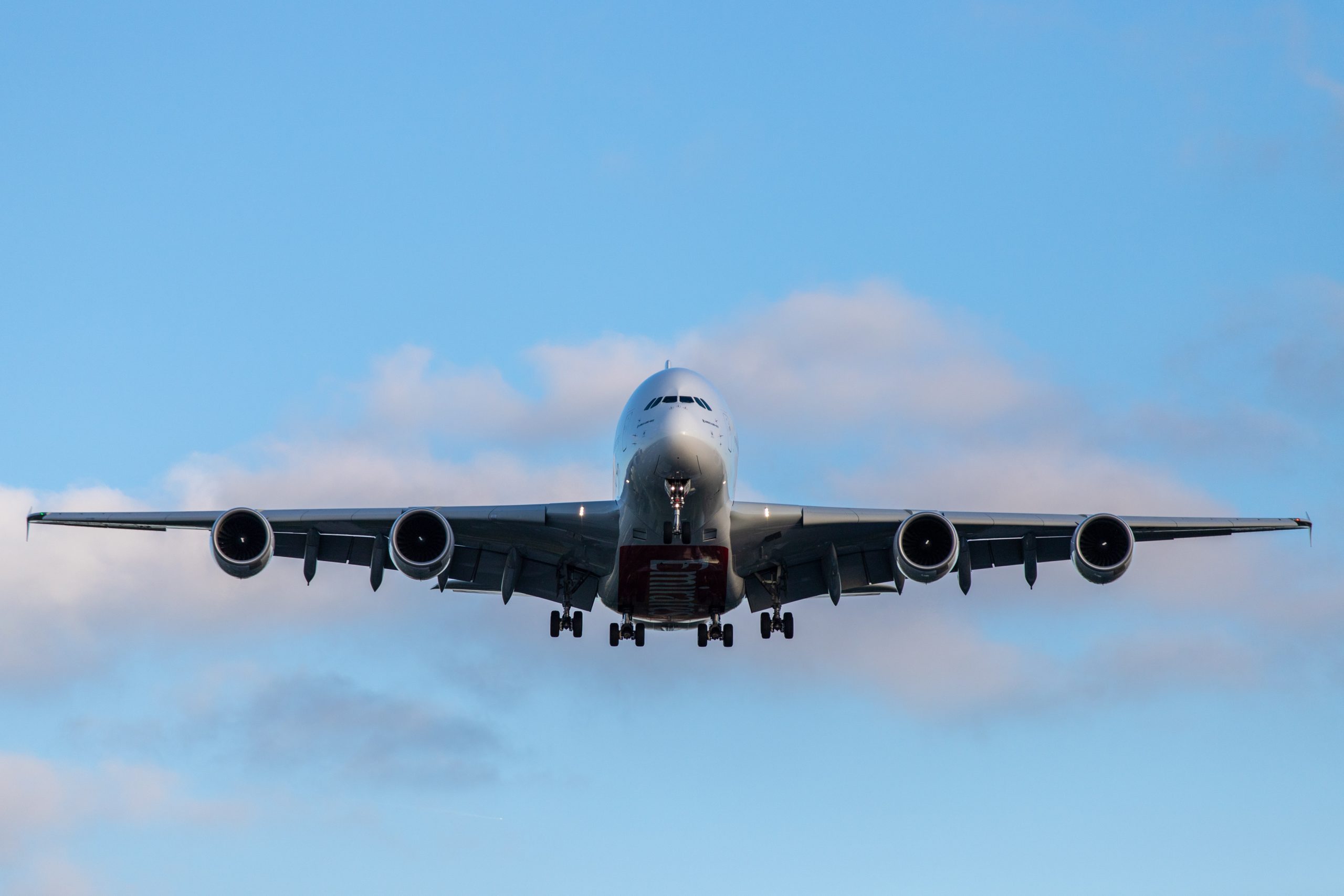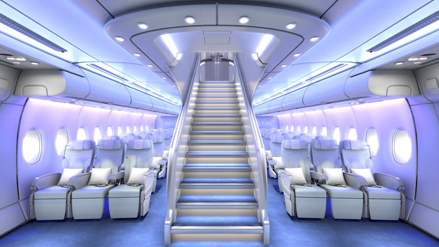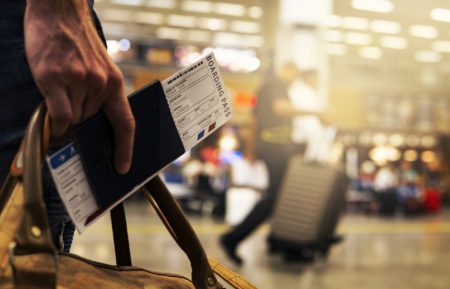Leisure travel, Corporate travel
The Healthiest Medium and Long Haul Planes

The Context
Even before the events of the pandemic made everyone aware of social distance and air quality, the world’s two biggest airplane manufacturers, Airbus and Boeing, had already started looking to design onboard improvements. The companies dedicated their teams to designing planes that would be generally healthier for humans and the environment. Of course, once the pandemic arrived, this notion of “healthier” took on a whole different meaning.
We want to highlight the main features of some of the healthiest aircrafts available to the travelling public so that the next time you are shopping around for a ticket, you can make an informed decision: consider not simply the fastest route or the cheapest ticket, but also find the best options for the healthiest ride!
Let’s face it, even in BC (Before Covid) times, travel on a good day could take a toll on your health. The airport ground experience is stressful as you pull into the terminal and traffic swirls and jams. Your fellow travellers are more like gladiatorial adversaries, the ground staff, obviously well intentioned, hustles you from line to line, kiosk to kiosk. Then there’s the long wait at the security line. Finally, you find yourself fighting your way to the gate because you don’t want to be the last one onboard, the one who can’t fit their carry-on in the overhead bin because there’s no more room. And all of this, is before you have even stepped foot on the plane!
So, wouldn’t it be great if the plane you are about to ride in was designed for comfort and relaxation, and were an opportunity to cast off all the unhealthy stress of the airport? Add to this cabin features that are, simply put, healthier.
In re-designing a “healthier” aircraft, the manufacturers look at several criteria.
- Air pressure
The cabin’s air pressure is adjusted as the plane climbs to higher altitudes. This allows the plane to fly higher and more effectively. Pressure inside the cabin is the equivalent of anywhere from 6,000 to 8,000 feet above sea level. When that number gets to 8,000 or above, the result can be detrimental: altitude sickness and a lack of oxygen—never a good thing. New designs allow the cabin pressure to be kept at a comfortable 6,000 feet above sea level.
- Humidity
Airline cabins are notorious for the dryness that is ever-present. While most people are used to the humidity level at around 40%, the inside of the plane’s cabin can drop down to around 20%, creating an uncomfortable feeling in the sinuses that can lead to dryness and headaches as well as dry skin.
- Air cleanliness
Most modern airplanes use high-performance filters that can keep the cabin air fresh and odour-free. Issues with the air quality are usually not the fault of the plane’s design, but an issue with a particular filter or filtration systems.
- Lighting
With the development of composite windows, cabin windows no longer need to be the small portholes that barely allow for the flow of natural light. Additionally, designers are becoming more aware of lighting designs within the cabin that can mimic the natural light cycles of daylight and thereby cut down on the amount of jet lag suffered by passengers.
- Noise
The sound of the jets can be overwhelming, but many designs have silenced the noise to such an extent that the pilots on long haul trips have complained that it is too quiet to sleep.
The Best Contenders

Long haul vs. Medium Haul
The planes themselves can be divided into two groups. The long-haul planes are designed for trips of six hours or more. The medium haul planes are designed for trips between three and six hours. Short-haul flights are trips that run anywhere from thirty minutes to three hours. Though many of the medium- and long-haul jets may be used for short-haul, we are going to look specifically at the latter two categories.
Boeing
Boeing is hard at work designing a healthier fleet. With its ecoDemonstrator program, it is promising to move eco-friendly and passenger-healthy technologies out of the lab environment and into the skies. While many of the improvements will be on the environmental sustainability of the aircraft, much of the work is also focused on improving well-being of passengers while in flight.
The Boeing 787, designed for long-haul. The 787 has one of the most advanced composite fuselages ever built, which reduces weight and fuel consumption, while simultaneously cutting back on the amount of noise pollution in the cabin and the pollution of the environment.
The Boeing 787 Dreamliner series can fly at lower altitudes, making fluctuating cabin pressure less of an issue for long-haul passengers. Additionally, the series boasts better humidity control, cleaner air, improved temperature control and technology that provide a smoother ride from take-ff to landing.
It also features Boeing’s “eco-skies package,” an environmentally friendly design that uses a dimmable LED lighting technology to reduce energy use by more than 25 percent compared with previous aircraft models. That advance, along with the design of a larger cabin window, greatly reduces the effects of poor lighting on travellers. The Boeing 737 MAX models used mostly for medium are now being resuscitated from the dead after having been grounded for several years. While they do have a modern feel to their cabin with better lighting the aircraft’s interior design lacks the great health features of the 787.
Airbus
Airbus has made great strides in design innovation to bring more comfort to its passengers, with a particular eye on health and well-being.
The Airbus A380— was thoughtfully designed for care and comfort of the passengers. The series offers one of the world’s largest and most spacious aircrafts. Passengers can enjoy stretching out in wider seats, allowing for less anxiety stemming from the over-crowding of cabins. The cabin lighting and sound design have all been optimized with the passengers’ in-flight well-being as the highest priority.
The Airbus A220 series is becoming the backbone of Airbus’ medium-haul fleet, with a range of almost 6,300 km. The A220 offers redesigned lighting including full-colour LED ambient lighting that enhances passenger well-being. Wider seats and wider aisles add to the passengers’ comfort and improves airlines’ turn-around times. The spacious overhead luggage bins allow for one roll-on bag per customer, cutting down on the gladiatorial drama of passengers wrestling at the gate before boarding. And the lavatories, long problematic in the industry, have been designed to maximize comfort ( it even has a window porthole) and ensure easy access for all passengers, including those in wheelchairs.
The Winner A350
The winner of the healthy medium- and long-haul design, is the Airbus A350. The A350 has a range of anywhere from 15,000-18,000 km, depending on the model, making it the perfect model for both medium- and long-haul. The A350 takes Airbus’ dedication to interior space design and improves even further, allowing for more personal space for passengers in all cabins. Because of the straight sidewall design, there is even more room everywhere, including the baggage bins. The cabin fuselage is wider than its Boeing 787 rival, thus allowing for each seat in economy to be one inch wider.
But it doesn’t stop there, Airbus redesigned the in-flight entertainment systems with high-bandwidth fiber optics which has flattened out the floor and maximized under-seat foot space. Gone are the clunky wire boxes at your feet for the storage of the entertainment systems wiring!
Taking successful ideas from the A320 Family and the A330neo, Airbus has further improved the design of the lavatory and galley spaces to maximize both passenger and crew comfort and doing away with the past traffic jams that were all too frequent among those wanting to simply stretch their legs. Add to all this how quiet the cabin sounds, room for one bag per passenger ratios in the overhead bins, large windows allowing natural light in and the benefits of having the most humidity in the air circulation on any aircraft and we’ve got ourselves a best-in-class winner!
While the industry has stepped up to meet the challenges of providing a healthier experience for airline travellers, the Airbus A350 is the ultimate winner of healthiest medium- or long-haul planes. Thanks, Airbus, for making us a little happier, a lot healthier and for helping us reduce our carbon footprint!





